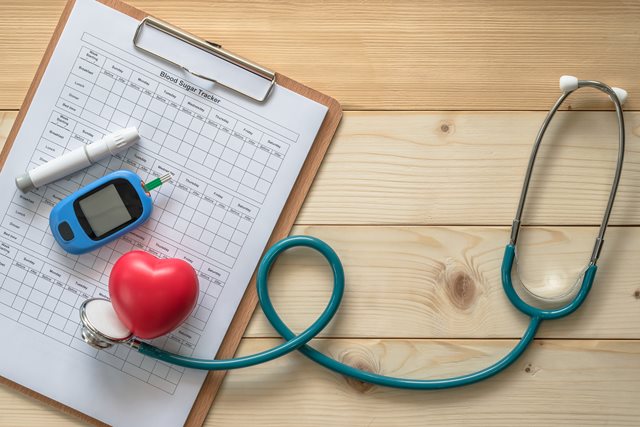With the cost of food increasingly becoming higher, we all could use some tips on how to eat healthy while spending less in the grocery store.
As a general rule, eating well and spending less always starts with meal planning and creating a shopping list.
Start your list by looking in your fridge and cupboards first to see what you already have, so you only buy what you will need for the week.
Planning your meals for the week in advance helps to focus on only the things you need to buy and helps identify pantry items you already have on hand. Making a list can also help cut down on impulse buying.
Basing your meals and shopping list on seasonal ingredients and weekly specials can also help you save. But decide whether an item on special is worth going out of your way for. If you are saving only a small amount of money, it might not be worth the extra cost in transportation.
Also consider package sizes: Larger may seem like a better buy, but in some cases, it may actually be wasteful. For example, a two-litre carton of milk may be cheaper than one litre, but if you do not use it quickly enough, the milk may spoil. Bags of milk, on the other hand, can last longer (so long as they remain unopened or are frozen).
Here are some more money-saving ideas:
Vegetables and fruit
• When buying fresh, buy only what you need and know you will eat. Sometimes seasonal produce may be more affordable but this depends on where you live. Use up what you’ve bought or consider freezing anything you haven’t been able to use by the end of the week to add to soups and stews another time. Cutting down on food waste also saves money.
• Frozen fruit and vegetables can provide top-notch nutrition and avoid waste. But avoid sweetened, preseasoned, or sauced selections: They may cost more, and may also contain more sugar, sodium, and/or fat.
• If a package of produce is larger than what you may use, consider splitting the cost with a friend or neighbour.
• Buy fruit of varying ripeness so they are not all ripe at the same time—a simple way to avoid spoilage.
Meat and alternatives
• Practising portion control not only offers blood sugar benefits, but it is also a terrific costsaver. Try to keep serving sizes to the recommended maximum of 100 grams per person—around the size of a deck of cards. When buying larger packages of meat or poultry, divide the raw food into appropriate portions, wrap well, label and date each package, and place the extra in the freezer. Freeze leftover cooked foods as well.
• Buy the less expensive meats (for beef, look for blade, chuck, flank, or round; for pork, choose butt, loin, or rib); these are less tender but will still yield tasty results if you use appropriate cooking methods (such as slow cooking or braising). When buying chicken, choose the whole bird and then cut it up at home and freeze the pieces.
• Use pulses (such as chickpeas and lentils) or dried peas and beans more often—they are an economical and nutrition-packed meat alternative. Cook them from scratch and freeze them in labelled and dated containers according to the amount you would need for a recipe. Canned options are cheaper and more convenient, but rinse them well to lower the sodium.
• Stretch your meat purchases by combining or blending them with plant proteins. For example, mixing ground meat with beans or lentils to make chili, taco or burrito filling and burger patties stretches a pound of meat from four to six or even eight servings.
• Canned fish, such as sardines, mackerel, white albacore tuna, and red salmon, can be money-smart ways to get heart-healthy omega-3 fats (canned pink salmon and light tuna are cheaper alternatives, although they contain smaller amounts of these fats). Rinse and drain canned fish to lower the sodium content.
• Don’t forget eggs, which are a good inexpensive source of protein. There are many ways to use them outside of breakfast and baking that will add protein at a reasonable cost. For example, enjoy frittatas or omelettes for dinner or add eggs to salads and sandwiches in place of meat.
Milk and alternatives
• Look for milk on sale or visit local corner stores where milk is often cheaper. Skim milk powder is another money-saver; mixing skim milk powder and water with fluid milk can offer a more pleasing taste than the skim milk powder-and-water mixture on its own.
• Choose plain yogurt instead of flavoured varieties, which usually contain added sugar and can result in higher blood sugar levels. If the taste is not to your liking, add your own fruit and spice up the mix with options, such as a dash of vanilla extract or cinnamon and a low-calorie sweetener if desired.
Grains
• Freezing rather than refrigerating whole-grain breads and rolls will keep them fresh tasting. Remove one or two slices at a time from the freezer as needed.
• Buy whole grains, such as brown rice and quinoa, in bulk, and keep refrigerated to maintain their freshness. Choosing less processed foods can also benefit both your blood sugar and budget. For example, large, flaked oats are not only cheaper than instant but they are digested more slowly, causing a slower rise in blood sugar.
• Dry goods such as pasta have a long shelf life, so buy them in large amounts when they are on sale; they will last a while (choose whole-grain pasta for better blood sugar control).
Looking for easy and delicious budget-friendly recipes? Here are three we think you’ll enjoy:
Chicken and White Bean Stew
Curried Lentils & Vegetables
Cheesy Egg Veggie Bites
Did you know?
Using a meal plan—even just a basic outline—can help make shopping more efficient and cut down on food waste because it can help you see how you can use leftovers in another meal. For example, in your week’s meal plan, leftovers from a roasted chicken dinner one night could be included in quesadillas the next night. Visit our meal-planning series that includes Meal planning 101: Plan, Meal planning 101: Shop, and Meal Planning 101: Cook to learn more.
This adapted article originally appeared in Diabetes Dialogue.
Related Content

Nutrition
Learn more about how to incorporate good-for-you foods into your meals.
Get started About Nutrition
Tools & resources
Take charge of your health with tools and resources from Diabetes Canada.
Learn more About Tools & resources
Virtual learning
Learn more tips and tricks by checking out one of our many options.
Get started About Virtual learning